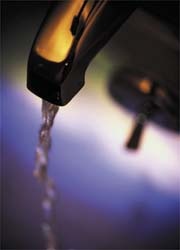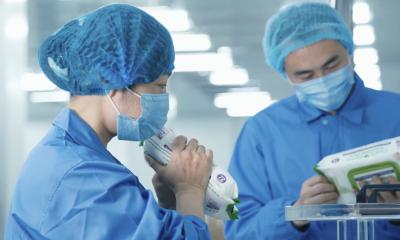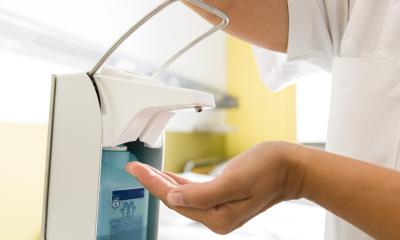Infection source: water
Pathogenicity of coagulase-negative staphylococci is underestimated
That tap water carries pathogens such as legionella or pseudomonas aeruginosa is well known, writes Heidi Heinhold. However, new research results show that bacteria that were previously considered non-pathogenic, such as coagulase-negative staphylococci (CONS), can be present in hospital water and are transmitted by the water

The enzyme coagulase transforms fibrinogen to fibrin in blood plasma. It is produced by staphylococci, e.g. staphylococcus aureus. Therefore this group of bacteria is called coagulase-positive. On the other hand, coagulase-negative staphylococci (CONS), e.g. Staph. epidermis on the skin, do not produce coagulase.
In the past, CONS were considered non-pathogenic. However, recent studies indicate that these environmentally resistant and ubiquitous bacteria may play a crucial role in causing nosocomial infections since they are often present in liquids that are common in hospitals. Their pathogenicity may be increased by increased saline concentrations, for example in dialysis liquids. Moreover, they develop antibiotics resistance, which they can pass on to the next generation via the mecA gene.
Method
104 cold water samples were examined for API ID 32 STAPH CONS. In addition, an anti-biogram was performed and the mecA gene was identified in order to determine possible antibiotics resistance. The ability of the identified strands to survive in distilled water, tap water, 1 x PBS and 10 x PBS (PBS = phosphate-buffered saline) was determined.
80 of the 104 samples were taken in four hospitals with dialysis facilities in south-western Germany. 24 further samples were taken from stagnating water from an eye wash fountain in the institute for hygiene at Tübingen university hospital, in Germany.
32 samples were tap water from the municipal water system; seven samples consisted of softened water; the water of 26 samples had undergone reverse osmosis and 39 samples were dialysis liquid. The following factors were determined: bacteria load, CONS (gram-positive and gram-negative colouring), methicillin resistance (oxacillin and 17 other antibiotics), mecA gene and the ability to survive in different saline concentrations.
Results
78.8% of the water samples tested showed bacterial contamination, including all 32 tap water samples (= 100%, incl. all samples from the eye wash fountains). All seven (= 100%) of the softened water samples were contaminated, as were 84.6% of the reverse osmosis water, 12 of 19 samples from dialysis liquids (63.1%) as well as 9 from 20 samples from post-dialysis liquid (45.0%).
In 23 of 104 water samples (= 22.3%) a total of 114 CONS strands were identified. 34.7% of the CONS did not show resistance to any of the test antibiotics. All isolates showed sensitivity towards oxacillin, ampicillin plus sulbactam, cefazolin, cefuroxim, imipenem, rifampicin, clindamycin, ofloxacin and cotrimoxacol.
The ability to survive was shortest in the distilled water (2.8 ± 1.1 days); in tap water it was 3.4 ± 2.4 days, in 1 x PBS the bacteria survived 6.3 ± 3.9 days and in water with the highest ion concentration 10 x PBS 6.7 ± 3.6 days. This means that CONS’ ability to survive increases with increased saline concentration.
Conclusion
The study shows that over one fifth of different types of hospital water (22.3%) were contaminated with one or more CONS. The high percentage of CONS load points to the fact that potentially all water systems are colonised by bacteria. CONS, being present in a hospital’s water system, may be breathed in from running tap water, taken in orally or transmitted by smear infection.
Detection of CONS in dialysis liquid is highly alarming and means that the current concept of CONS as being spread via human skin along central or peripheral catheters into the bloodstream, with following nosocomial infection in the form of CONS bacteraemia, or via colonisation of nasal and anal mucosa has to be expanded. Obviously, CONS originating in the water system are a more frequent cause of nosocomial infections than previously thought.
* D Worlitzsch, et al: Detection of coagulase-negative staphylococci in hospital water systems. Hygiene Medizin 2006; 31 (12)
30.10.2007





